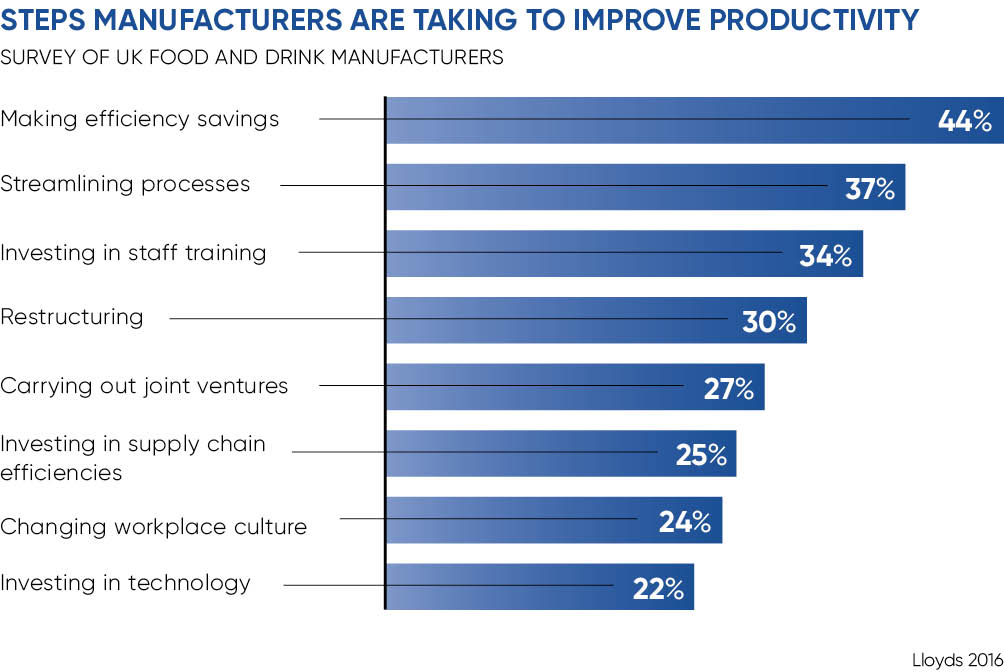Let’s face it, when we look at the manufacture, supply and production of goods across all industries, the UK’s food sector is up there as being one of the least digitised. You’re more likely to see pen and paper than scanners and barcodes, a phone call rather than an electronic order. Yet the tide is turning.
There’s an increasing realisation that our food supply chain could benefit from a 21st-century technological makeover. Digitisation and automation have made incredible inroads in aerospace and electronics, so why not food?
“We’re starting to see plenty of interest across all aspects of the supply chain regarding innovation in this area, but without any significant breakthroughs in acceptance yet,” says Keith Thornhill, business manager for food and beverage at Siemens. “I’m confident this will change as the consumer demands for price, quality and customisation continue to put pressure on industry.”
There’s agreement that elements of the UK’s food supply chain aren’t agile enough to respond to the modern consumers’ needs. At the same time, there’s still intense pressure on prices, which in turn dampens down investment in state-of-the-art systems.
“Food will be a big area for tech innovation in the next decade; the potential is enormous,” says Rob Haward, managing director of Riverford. “With more investment, I’m sure that plenty of, as yet, unknown innovations will become feasible. We will unquestionably continue to see huge innovations in last-mile logistics. The main area of change will also be convenience.”
Supply chain tracking and tracing foodstuffs throughout the manufacturing process is one area showing promise. “In the past 12 months, we’ve received enormous interest in transparency and traceability tools,” says Jessi Baker, chief executive of Provenance. “A growing number of businesses now use technology to link with their supply chains and make the origin of products available to shoppers.”
Provenance have recently used blockchain tech to design one of the world’s first interactive certification marks for the Soil Association. This provides information about a certified product. Hover a smartphone over the mark and you get live information gathered throughout the product’s journey from farm to supermarket, with key data stored on the electronic ledger.
We could see an explosion in small producers in the same way we have with Amazon marketplace
“With blockchain, we see innovation happening firstly with premium foods like meat and liquor or any product with claims to prove about origin,” says Ms Baker. This tech has potential for organic food, Fairtrade goods or monitoring the social impact of supply chains.
However, the internet of things has yet to deliver a killer app in this sector and radio-frequency identification (RFID), basically smart food labelling, has yet to reach a price point where it can be applied holistically to the supply chain. Therefore, companies that make investments could gain competitive advantage.
“The industry needs only look to the automotive sector where each car produced on a line has already been sold and is unique with a plethora of customised options. High levels of digitisation and automation have made this economically viable,” says Alexander Hill, co-founder of Senseye.
“Many companies are interested in Industry 4.0 [automation and data exchange], but remain baffled as to how it can help them. There’s a tremendous opportunity to improve efficiency and quality. Consumers are demanding huge quantities of quality, healthy and inexpensive food, traits which don’t naturally align, so efficiencies outside of the ‘normal’ supply chain must be sought.”

Fresh food supply chains are becoming shorter and faster in a bid to retain product life. Innovations now abound, including intelligent packaging with biosensors indicating freshness. The aim is to reduce waste and provide useable data.
“We expect machine-learning will eventually enable manufacturers to incorporate demand in real time,” says Colin Elkins, global industry director for process manufacturing at IFS. “Food manufacturers will be forced to innovate concerning the volume and frequency of orders, increased variation or rapid product development.”
There’s good news for local food producers and manufacturers. As the capability of supply chains increases then we could see an explosion in small producers in the same way we have with Amazon marketplace.
“Will consumers order steak from their favourite local farm, cheese from another and wine from an organic French vineyard to be delivered direct by 6pm, and will they be prepared to pay a premium?” asks Geoff Locket, senior consultant at Dassault Systèmes Quintiq.
“Many will and if the technology and integration barriers can be overcome then this is likely to become reality and maybe the shift online we’ve seen for many retailers will move into food too.” There’s a thought.
